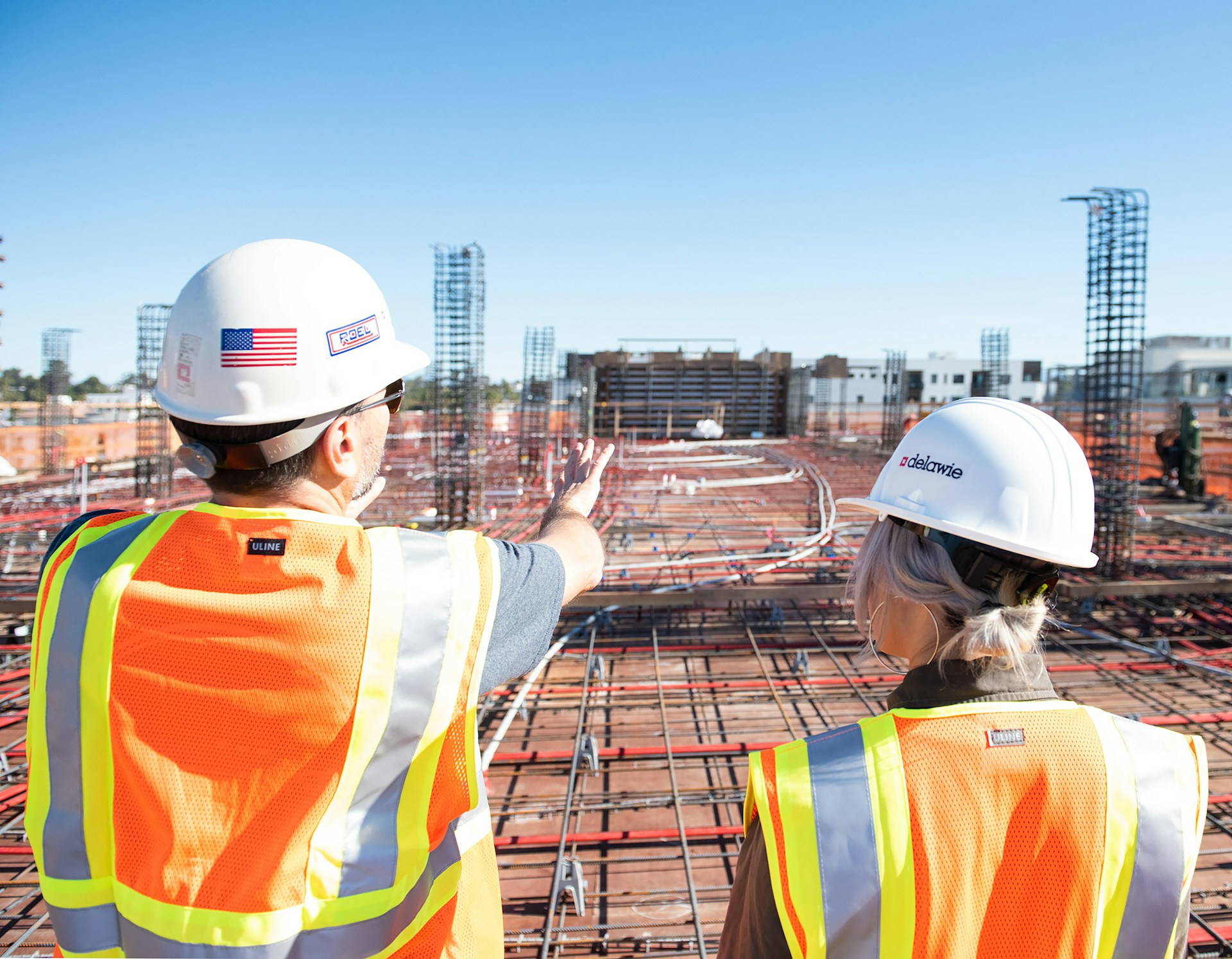Risk management forms a considerable part of any construction project planning and management. A construction project entails many associated risks like environmental, financial, socio-economic, and other construction-related risks. Practical risk management studies and deals with these risks.
The construction industry is undoubtedly risky and volatile. It’s easily influenced by technical issues, design issues, logistics, environmental factors, socio-political, physical, force majeure, etc. These risks can derail any construction project.
It is here that risk management steps in. It helps us in risk mitigation, analysis, and taking remedial actions.
So, let’s first delve a little into the various types of risks construction firms face, and then we will see the risk management process in detail.
Significant Risks Types In Construction Project Management
1: Financial Risks
Some of the critical financial risks are:
| Changing exchange rates | Market demand |
| Material costs | Faulty estimation |
| Inflation | Poorly managed cash flow |
| The incapability of the contractor to complete the entire project |
2: Socio-Political Risks
Some examples of socio-political risks:
| Amended Govt. rules and regulations | Law and Order |
| Bribery | Failure of payments by the govt. |
| Increased taxes | Changes in government |
3: Environmental Risks
Weather can change anytime, giving the project team a hard time. Some environmental risks are:
| Inclement weather conditions | Natural disasters |
| Site is inaccessible | Pollution |
| Safety norm |
4: Construction-Related Risks
Lastly, here are the top construction-related risks:
| Logistics failure | Labor disputes |
| Changes in design | Labor productivity |
| Rush in bidding | The time gap for revision of drawings |
| Poor work quality owing to time constraints |
The Process of Risk Management Planning In Construction
The risk mitigation process is similar in every application. The only variable factor is the risk types the construction industry faces. Here is the 5-step process of risk management:
1: Identification
Identify all the risks the business can encounter. The company’s past projects’ data, talk with the crew and study other projects similar to the task at hand.
However, there are no ends to the lengths the risk management team can go to analyze the situation. But keeping a strict deadline will help everybody stay on track.
2: Assessment
Every risk has a different occurrence probability and its impact on the business. Some risks are more likely, some less. Some affect business way more than others.
A risk assessment matrix is an excellent way to deal with the problem at hand. The matrix charts the likelihood of every risk with its impact size on the project. A risk assessment matrix helps mitigate the risk when it occurs.
3: Mitigation
Mitigation involves coming up with a contingency plan.
The better the contingency plan, the lesser likely they are to occur and the lesser the impact of risk on business.
Prioritize risks to come up with a contingency plan. The priority must be given to the risk with the most impact on business. These high-priority risks should be assigned an owner who will take responsibility when the accident occurs and will be held answerable for the proceedings.
4: Monitoring
Monitoring never stops. It is an ongoing process.
This includes the continuous monitoring of the effectiveness of the mitigation plans. The concerned stakeholders should be consulted for the mitigation plans and updated with the new ones.
Involve other department leaders for insights into how to respond to risks, should they occur.
Lastly, inform each concerned employee if a specific risk has moved within or from the risk assessment matrix.
5: Reporting
The contingency or mitigation plan should be regularly analyzed and reported to the crew and stakeholders. These reports help evaluate the shortcomings of project’s risk mitigation plans.
However, one may be inclined towards using excel spreadsheets; opting for a risk assessment software might be a better choice.
The software collates all data automatically and arranges them in neat interactive graphs without any input from the operator’s side. Moreover, the software can create customized reports which can be shared with 1various stakeholders automatically.
How Risk Assessment Software Aids Risk Management?
1: Identifying Risks
The risk assessment software can identify all the detrimental risks. Many software autosuggest risks and the operator can also custom add risks. Moving further, the software also allows documentation of the risk to create a risk register.
2: Classifying Risks
Classify the identified risks based on risk impact and occurrence probability. Next, develop prioritize lists by analyzing them based on their impact over seven factors.
3: Mapping Risk Triggers
Prevention is better than cure. Do not overlook a risky event that could lead to accidents in the future. The risk assessment software helps identify triggers in the system. After the trigger has been activated, the system provides the information on the next steps.
This leads to a proactive approach to problem-solving rather than a reactive approach, which ultimately keeps project on track with the timeline and budget.
4: Creating Mitigation Plans
A robust risk assessment software allows the stakeholders to visualize all open and closed risks and statistics around them for better governance. It also allows the operator to map the next steps to any risk trigger to let the employee responsible know the next steps for eliminating, reducing, or transferring risk.
The software will also map the staff responsible for managing the risk.
5: Risk Dashboarding And Reporting
It is essential to analyze and study how risk mitigation plans are performing.
But instead of struggling for hours to produce these reports, the software does that with much more ease without any input from the operator.
It generates PDF exports for sharing and other dashboard elements to help improve plans for the better.
Wrapping Up
Risk management in construction is critical, keeping in view the large number of risks E&C firms face on a day-to-day basis. The reactive approach to handling accidents is one of the significant reasons why construction projects overrun timelines and budgets. This is precisely why risk assessment software is such a significant bounty for the E&C industry.




